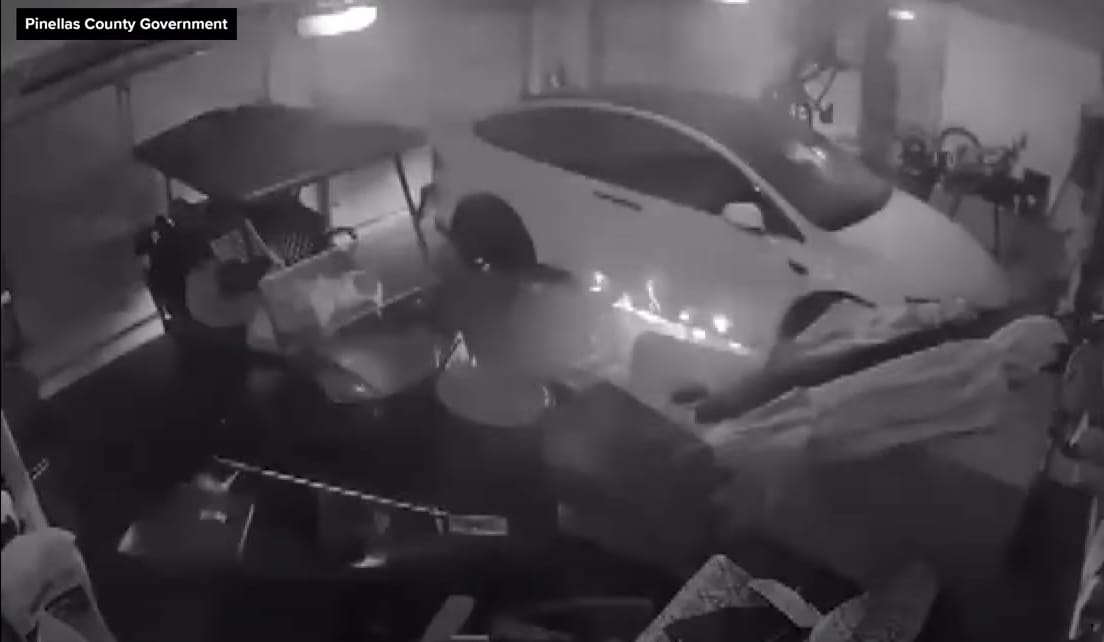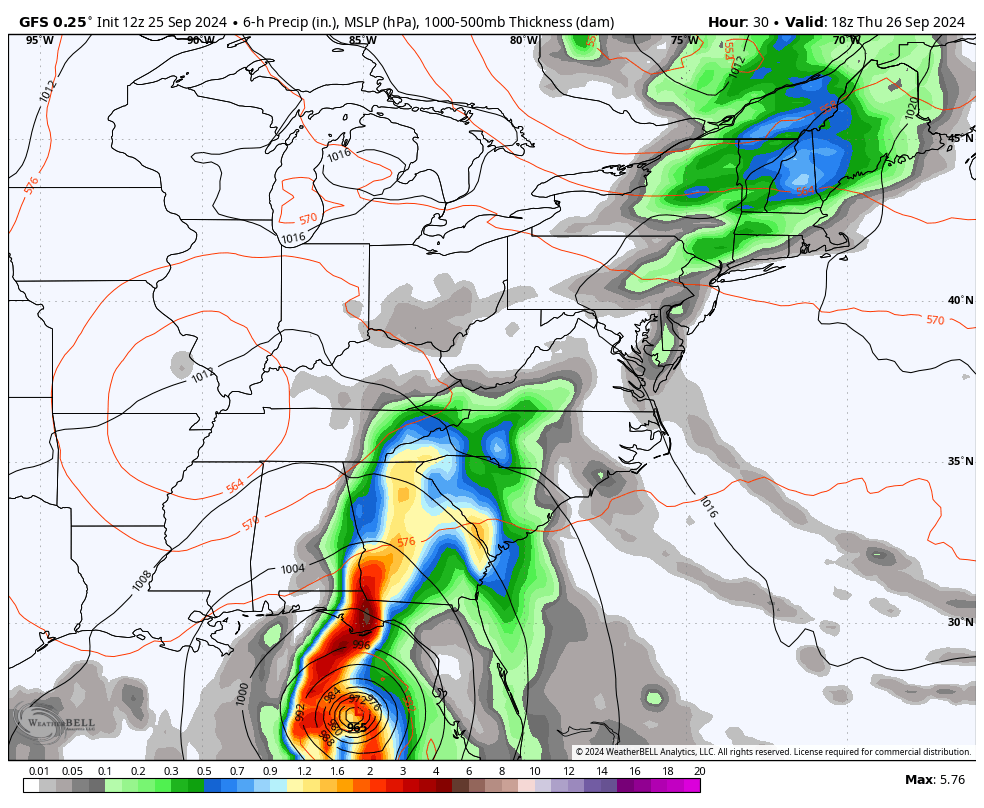Hurricane Helene left a trail of devastation across the Southeast over the weekend after strengthening to a Category 4 hurricane and packing sustained winds of 130-156 mph.
Between the extensive flooding, snapped power lines, and water-sensitive batteries, Helene’s aftermath highlights just how dangerous storms of this magnitude can be for dealers in particular.
As recovery begins, we explore the damage, the heroic efforts of dealerships and industry partners, and what’s next for communities trying to rebuild.
THE DAMAGE
42T gallons fell during the storm, enough to fill Lake Tahoe or flow over Niagara Falls for nearly two years.
33 tornadoes spun up across the region, including an EF3 tornado in Rocky Mount, North Carolina, that left 15 people injured—some critically.
5,000 trees down. Georgia Power reported over 5,000 power poles damaged by fallen trees, while South Carolina saw even worse numbers with 6,000 poles down in the northwest part of the state. Over 425 miles of wire will need to be restrung.
1.6M still without power. At its peak, the storm knocked out power for 4.8M customers, making it the largest concurrent outage since Hurricane Irma in 2017.
15 feet of storm surge peaked in parts of Florida’s Big Bend.
36.65 inches was the most rainfall recorded during the storm, devastating Jonas Ridge, NC. Multiple areas in North Carolina saw rainfall totals surpassing 30 inches.
209 flood warnings were issued during the storm, including 36 flash flood emergency statements.
5,785 National Guardsmen deployed. The Pentagon sent in thousands of National Guardsmen, along with helicopters, drones, and search-and-rescue teams to aid in the recovery.
WHY WAS NORTH CAROLINA HIT SO HARD?
Western NC took the brunt of Hurricane Helene’s wrath, with staggering rainfall and devastating flooding. But, why was this region in particular hit so hard?
A Perfect Storm—Literally
Several factors combined to create a massive rainfall event:
A low-pressure system had already stalled over the Southeast, soaking the area before Helene even arrived.
When Helene hit, the mountains trapped moisture, squeezing out even more rain.
The geography caused intense runoff, amplifying flooding as water raced downhill.
John Policastro, president of the North Carolina Automobile Dealers Association, explained that communication has been a significant challenge.
Many areas still have no power or cell service, and some towns have been completely "wiped away" by floodwaters.
HOW HAVE DEALERSHIPS BEEN AFFECTED?
With over 2M customers across the region losing power and floodwaters rising, dealerships were left with no choice but to pause operations and focus on the safety of employees and customers.
Victory Layne Chevrolet in Fort Myers and Capital Eurocars in Tallahassee were among the first to close, with CarMax halting operations at seven locations in Florida and Alabama. Morgan Auto Group followed suit, shuttering multiple Tampa dealerships like Sun Toyota and Porsche Tampa.
In just one instance, Ken Ganley Kia in New Port Richey, Florida is facing some staggering losses: 672 vehicles totaled, with damage estimates between $20-30M.
The flooded vehicles—including 500 new Kias, 160 used cars, and 12 cars that were being serviced—were destroyed, some even catching fire. But, Ganley is already pushing forward thanks to the support of industry partners.
Community and Industry Support
Dealerships and partners are banding together to offer all the support they can. Here are just some of the ways:
The Florida Automobile Dealers Association offered immediate support to Ganley’s employees.
JM&A Group provided free generators to keep operations going.
Kia Motors responded quickly, delivering 15 new vehicles within a day and promising 300 to 400 more from the factory.
CarMax closed its Asheville and Augusta locations, offering affected employees up to $1,500 in tax-free financial assistance through their Associate Disaster Relief Fund.
NADA is working with dealer associations across the impact zone. Affected dealership employees can apply for emergency grants up to $1,500 on the Foundation website at www.nadafoundation.org.
Hurricane Helene’s floodwaters didn’t just wreak havoc on homes and roads—electric vehicles also pose a significant fire hazard.
Lithium-ion batteries are highly reactive to water, particularly saltwater, which can cause short circuits and lead to combustion.
Florida’s concern is especially urgent, as the state is home to more than 238,500 EVs (the second-largest EV market in the country). Electric vehicles left in garages or near structures have already caused many fires.
What Dealers Need to Know
Always move EVs away from buildings prior to any significant storm—at least 50 feet from structures or combustibles is recommended. And, move to higher ground if flooding is imminent.
Encourage customers to report any EVs that were submerged or exposed to floodwaters and have affected EVs towed to the dealership for a thorough inspection by certified technicians.
EVs exposed to saltwater can catch fire days after flooding.
Fires are incredibly difficult to extinguish, lasting six hours or more and potentially reigniting.

A submerged Tesla in Pinellas County catching fire inside of a garage.
WHAT’S NEXT?
The economic damage from Hurricane Helene is staggering, with AccuWeather estimating losses between $145B to $160B, catapulting Helene into the ranks of the most expensive storms in U.S. history.
And, we’re not out of the wood yet.
The standard Atlantic hurricane season is from June 1st to November 30th, with the peak season from mid-August to late October, so there’s plenty of time for Patty or Tony to do their own damage.
Managing Flood-Damaged Cars Post-Hurricane
After the floodwaters from Hurricane Helene recede, dealerships in the Southeast will need to brace for an influx of flood-damaged vehicles entering the market. These cars may look fine at first glance, but they could be ticking time bombs for both dealerships and customers.
What to Watch For
Salvage titles: Flooded cars receive this designation, but sometimes shady sellers “wash” titles to hide the vehicle’s past.
Long-term issues: Water-damaged cars can face serious problems later, including failing electronics, safety system malfunctions, and corrosion.
Immediate signs: Foul odors, engine smoke, rust, and discolored interiors can be initial indicators of flood damage.
For dealerships, it’s crucial to perform thorough inspections and be vigilant at auctions. Missing signs of water damage could lead to major safety issues down the line.
WANT TO HELP?
Here are three specific ways dealers who are able can help their communities during this difficult time:
Provide financial assistance to employees: Consider setting up a disaster relief fund to help staff members who’ve lost homes or personal property.
Donate vehicles or resources: Partner with manufacturers to supply vehicles to emergency responders or displaced families.
Serve as community hubs: Offer facilities as local support centers for charging devices, shelter, or distributing supplies, especially in areas with extended power outages.
If you aren’t local or donations are more of your speed, there are plenty of those options available as well — check here, here, here, or here.
📬 For more data and stats like this delivered right to your inbox, subscribe to our daily email. 👇






